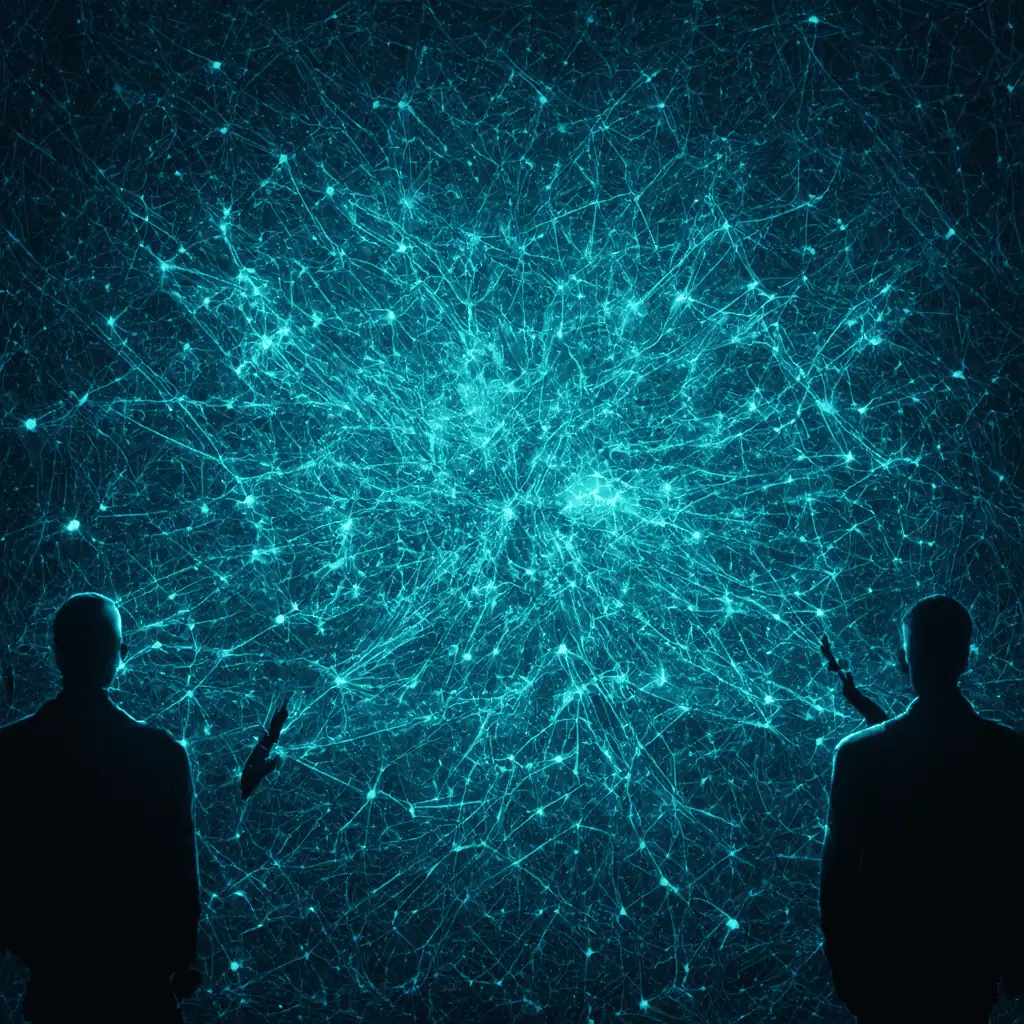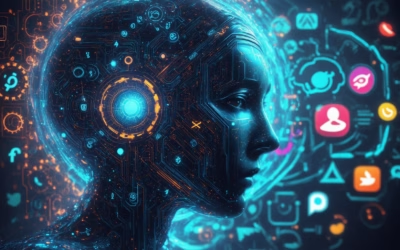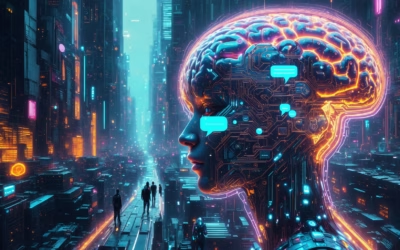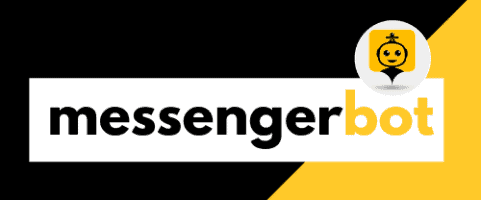In today’s digital landscape, businesses are constantly seeking innovative ways to enhance customer interactions and streamline communication processes. Enter the realm of chatbots and conversational AI, two transformative technologies that are revolutionizing how companies engage with their audience. As artificial intelligence continues to evolve, the line between AI chatbots and more sophisticated conversational AI systems becomes increasingly blurred, offering unprecedented opportunities for personalized, efficient, and scalable customer service. This article delves into the intricacies of these AI-powered communication tools, exploring their differences, applications, and the profound impact they’re having across various industries. From understanding the fundamentals of AI chatbots to examining advanced conversational AI platforms, we’ll guide you through the landscape of intelligent virtual assistants that are reshaping the future of business communication.
Understanding the Foundations of AI-Powered Communication
In today’s digital landscape, AI-powered communication has revolutionized the way businesses interact with their customers. At Messenger Bot, we’re at the forefront of this transformation, offering cutting-edge solutions that harness the power of artificial intelligence to enhance customer engagement and streamline business operations.
What is conversational AI vs chatbot?
Conversational AI and chatbots are often used interchangeably, but there are crucial differences between the two. Conversational AI refers to advanced systems that use natural language processing (NLP) and machine learning to understand and respond to human language in a more nuanced and context-aware manner. These AI chatbots can handle complex queries, learn from interactions, and provide more human-like responses.
On the other hand, traditional chatbots are rule-based programs that follow pre-defined scripts to answer simple questions. While they can be effective for basic customer service tasks, they lack the adaptability and intelligence of conversational AI systems.
At Messenger Bot, our AI-powered features bridge this gap, offering sophisticated conversational capabilities that go beyond simple chatbot functionalities. We leverage advanced NLP techniques to ensure our bots can understand context, sentiment, and intent, providing more meaningful and personalized interactions.
Exploring AI chatbot fundamentals
AI chatbots are transforming customer service by offering 24/7 support, handling multiple queries simultaneously, and providing instant responses. These artificial intelligence chatbots use machine learning algorithms to analyze vast amounts of data, enabling them to improve their performance over time.
Key components of AI chatbots include:
1. Natural Language Processing (NLP): Allows the bot to understand and interpret human language.
2. Machine Learning: Enables the bot to learn from interactions and improve its responses.
3. Dialog Management: Manages the flow of conversation and maintains context.
4. Integration Capabilities: Connects with various platforms and databases to access relevant information.
Companies like IBM Watson and Microsoft AI have made significant strides in AI chatbot technology, but at Messenger Bot, we focus on making these advanced capabilities accessible to businesses of all sizes. Our pricing plans are designed to offer scalable solutions that grow with your business needs.
By incorporating AI chatbots into your customer service strategy, you can significantly enhance user experience, reduce response times, and free up human agents to handle more complex issues. This not only improves efficiency but also leads to higher customer satisfaction rates.
To get started with AI-powered communication, explore our free trial offer and experience firsthand how our conversational AI can transform your customer interactions.

The Evolution of Customer Interaction Technologies
As businesses strive to enhance customer experiences, the landscape of customer interaction technologies has undergone a significant transformation. At Messenger Bot, we’ve witnessed firsthand how AI-powered communication tools have revolutionized the way companies engage with their audience. The evolution from simple chatbots to sophisticated conversational AI systems marks a pivotal shift in customer service paradigms.
What is the difference between chatbot and conversational interface?
While often used interchangeably, chatbots and conversational interfaces have distinct characteristics. Chatbots are typically rule-based programs designed to respond to specific keywords or phrases. They follow predetermined scripts and can handle simple queries efficiently. On the other hand, conversational interfaces, powered by conversational AI, offer a more dynamic and context-aware interaction.
Conversational interfaces utilize natural language processing (NLP) and machine learning algorithms to understand and respond to user inputs in a more human-like manner. These advanced systems can interpret context, remember previous interactions, and provide more personalized responses. Our AI-driven platform exemplifies this evolution, offering businesses the ability to create sophisticated conversational experiences that go beyond simple chatbot functionality.
Conversational AI chatbot examples in modern business
The implementation of conversational AI chatbots has transformed customer service across various industries. For instance, in e-commerce, Amazon utilizes AI-powered chatbots to assist customers with order tracking, product recommendations, and troubleshooting. These bots can handle complex queries and even process returns, significantly reducing the workload on human customer service representatives.
In the banking sector, JPMorgan Chase has introduced COIN (Contract Intelligence), an AI-powered system that interprets commercial loan agreements. This technology has dramatically reduced the time spent on document review tasks from 360,000 hours to mere seconds, showcasing the efficiency of conversational AI in complex business processes.
At Messenger Bot, we’ve developed AI chatbot solutions that cater to various business needs. Our clients in the travel industry use conversational AI to provide real-time flight information, booking assistance, and personalized travel recommendations. These AI-driven interactions not only improve customer satisfaction but also drive conversions and loyalty.
The healthcare sector has also embraced conversational AI chatbots. Platforms like Babylon Health use AI to provide initial health assessments, schedule appointments, and offer general health advice. This technology has proven invaluable in managing patient inquiries, especially during peak times or health crises.
As we continue to innovate in the field of AI-powered communication, the line between chatbots and conversational AI becomes increasingly blurred. The future of customer interaction lies in seamless, intelligent conversations that provide value and enhance the overall customer experience. At Messenger Bot, we’re committed to staying at the forefront of this evolution, providing businesses with the tools they need to excel in customer engagement.
Artificial Intelligence in Customer Service
In today’s fast-paced digital landscape, artificial intelligence (AI) is revolutionizing customer service, offering unprecedented levels of efficiency and personalization. At Messenger Bot, we’re at the forefront of this transformation, harnessing the power of AI to elevate customer interactions to new heights.
AI-powered customer service solutions are reshaping how businesses engage with their clientele, providing round-the-clock support and instant responses to inquiries. Unlike traditional chatbots, AI chatbots and conversational AI systems can understand context, learn from interactions, and provide more nuanced and helpful responses.
How is AI different from chatbot?
While chatbots and AI are often mentioned in the same breath, there are significant differences between the two. Traditional chatbots operate on pre-programmed rules and scripts, offering limited responses based on specific keywords. In contrast, AI chatbots utilize machine learning and natural language processing to understand and respond to user queries more intelligently.
AI-powered systems can:
- Analyze sentiment and context in customer messages
- Learn from past interactions to improve future responses
- Handle complex queries that may require multi-step problem-solving
- Personalize interactions based on user history and preferences
For instance, our AI-driven features at Messenger Bot allow businesses to create dynamic workflows that adapt to user behavior, ensuring each interaction is tailored to the individual customer’s needs.
Best AI chatbot solutions for enhanced customer experience
When it comes to enhancing customer experience through AI, several solutions stand out in the market. While we pride ourselves on the capabilities of Messenger Bot, it’s important to acknowledge other players in the field:
- IBM Watson Assistant: Known for its robust natural language understanding and industry-specific solutions.
- Google’s Dialogflow: Offers a user-friendly interface for building conversational experiences across multiple platforms.
- Microsoft Power Virtual Agents: Integrates seamlessly with Microsoft’s suite of business tools.
However, for businesses looking for a versatile and powerful AI chatbot solution, our platform offers unique advantages. With Messenger Bot’s free trial, you can experience firsthand how our AI-powered tools can transform your customer service operations.
Key features that set top AI chatbot solutions apart include:
- Omnichannel support capabilities
- Advanced analytics and reporting
- Easy integration with existing CRM systems
- Customizable conversation flows
- Multilingual support
By leveraging these AI-driven solutions, businesses can significantly improve their customer service efficiency, reduce response times, and provide personalized experiences at scale. As we continue to innovate in this space, the potential for AI in customer service is boundless, promising even more sophisticated and seamless interactions in the future.
For more insights on how AI is revolutionizing customer support, check out our article on AI-powered customer service bots and how they’re elevating brand support experiences.
IV. Implementing Conversational AI in Business
As businesses strive to enhance customer interactions and streamline operations, implementing conversational AI has become a game-changer. This advanced technology goes beyond traditional chatbots, offering more sophisticated and human-like interactions that can significantly improve customer experience and operational efficiency.
At Messenger Bot, we’ve seen firsthand how conversational AI can transform businesses across various industries. From retail to healthcare, finance to hospitality, the applications are vast and impactful. Our platform enables companies to harness the power of AI-driven communication, creating personalized and efficient customer touchpoints.
A. What is a conversational AI?
Conversational AI refers to technologies that enable computers to understand, process, and respond to human language in a natural and contextually relevant manner. Unlike basic chatbots, conversational AI utilizes advanced natural language processing (NLP), machine learning, and deep learning algorithms to engage in more complex, nuanced conversations.
Key components of conversational AI include:
- Natural Language Understanding (NLU): Interprets user intent and context
- Natural Language Generation (NLG): Formulates coherent and contextually appropriate responses
- Dialog Management: Maintains conversation flow and context over multiple interactions
- Machine Learning: Continuously improves responses based on interactions
Our AI-powered customer service bots at Messenger Bot incorporate these elements to provide a seamless, intelligent conversational experience across various platforms, including websites, social media, and messaging apps.
B. Conversational AI vs generative AI: Key distinctions
While both conversational AI and generative AI fall under the broader umbrella of artificial intelligence, they serve different purposes and have distinct characteristics:
Conversational AI:
- Focused on facilitating human-like dialogue
- Designed for specific tasks and domains
- Utilizes predefined knowledge bases and rules
- Aims to understand and respond to user queries accurately
Generative AI:
- Capable of creating new content (text, images, audio, etc.)
- More versatile and can operate across various domains
- Relies heavily on large language models and deep learning
- Focuses on generating creative and diverse outputs
While generative AI, like Brain Pod AI’s Writer, excels at content creation tasks, conversational AI is specifically tailored for interactive communication. At Messenger Bot, we leverage the strengths of conversational AI to create engaging and efficient customer support experiences.
By understanding these distinctions, businesses can make informed decisions about which AI technology best suits their needs. Whether it’s implementing a customer service chatbot or generating marketing content, choosing the right AI solution is crucial for achieving optimal results.
V. Revolutionizing User Engagement with AI-Powered Chatbots
AI-powered chatbots are transforming the landscape of user engagement across various industries. At Messenger Bot, we’re at the forefront of this revolution, providing businesses with sophisticated tools to enhance customer interactions. Our AI chatbots are designed to deliver personalized experiences, efficiently handle inquiries, and streamline communication processes.
The integration of artificial intelligence in chatbots has significantly improved their ability to understand context, learn from interactions, and provide more human-like responses. This advancement has made AI chatbots indispensable for businesses looking to offer round-the-clock support and engage users in meaningful conversations.
A. Conversational chatbot examples across industries
Across different sectors, AI-powered chatbots are demonstrating their versatility and effectiveness:
1. E-commerce: Chatbots like those offered by Shopify assist customers with product recommendations, order tracking, and returns processing, enhancing the overall shopping experience.
2. Healthcare: AI conversational bots are being used to schedule appointments, provide basic medical information, and offer mental health support. Platforms like Ada Health exemplify this trend.
3. Banking and Finance: Many financial institutions have implemented AI chatbots to handle account inquiries, transaction processing, and even financial advice. Bank of America’s Erica is a prime example of an AI-powered financial assistant.
4. Travel and Hospitality: Chatbots in this industry help with booking reservations, providing travel information, and addressing customer service issues. Expedia’s virtual agent is a notable example in this sector.
5. Education: AI chatbots are being utilized to provide students with instant support, answer frequently asked questions, and even assist with course selection. Platforms like Coursera have integrated chatbots to enhance learner support.
At Messenger Bot, we’ve developed AI chatbot solutions that cater to various industries, ensuring businesses can leverage the power of conversational AI to improve user engagement and operational efficiency.
B. AI conversational bot strategies for improved user interaction
To maximize the effectiveness of AI conversational bots, businesses should implement the following strategies:
1. Personalization: Utilize data to tailor interactions based on user preferences and history. Our AI chatbot setup guide demonstrates how to create personalized experiences.
2. Omnichannel Integration: Ensure your AI chatbot can seamlessly operate across multiple platforms, including websites, social media, and messaging apps. This approach provides consistency in user experience regardless of the channel.
3. Continuous Learning: Implement machine learning algorithms that allow your chatbot to improve its responses over time. This ensures the bot becomes more accurate and helpful with each interaction.
4. Natural Language Processing (NLP): Invest in advanced NLP capabilities to enhance the bot’s understanding of user intent and context, leading to more natural conversations.
5. Emotional Intelligence: Incorporate sentiment analysis to detect user emotions and respond appropriately, enhancing the human-like quality of interactions.
6. Seamless Human Handoff: Design your chatbot system to recognize when a human agent is needed and facilitate a smooth transition without frustrating the user.
7. Proactive Engagement: Use AI to initiate conversations based on user behavior, offering assistance or information before the user even asks.
8. Multilingual Support: Implement multilingual capabilities to cater to a global audience, breaking down language barriers in customer service.
By implementing these strategies, businesses can significantly enhance their user engagement through AI-powered chatbots. At Messenger Bot, we’re committed to helping our clients leverage these advanced technologies to create more meaningful and efficient interactions with their customers.
VI. Technical Aspects of Conversational AI Development
In the rapidly evolving landscape of chatbots and conversational AI, technical development plays a crucial role in creating sophisticated and effective solutions. As we delve into the technical aspects, it’s essential to understand the resources and innovations driving this field forward.
A. Conversational-AI chatbot github resources
GitHub has become a hub for developers working on conversational AI and chatbot projects. These repositories offer a wealth of open-source tools, frameworks, and pre-trained models that can significantly accelerate the development process.
One of the most popular resources is the Microsoft Bot Framework SDK, which provides a comprehensive set of tools for building conversational AI applications. This framework supports multiple programming languages and integrates seamlessly with various channels, making it a versatile choice for developers.
Another valuable resource is the Rasa framework, an open-source machine learning framework for automated text and voice-based conversations. Rasa allows developers to create contextual AI assistants and chatbots with natural language understanding capabilities.
For those interested in building AI chatbots with Python, the ChatterBot library offers a machine learning-based approach to generating automated responses to user inputs. This library is particularly useful for creating conversational agents that can learn and improve over time.
At Messenger Bot, we leverage these open-source resources alongside our proprietary technology to create cutting-edge conversational AI solutions. Our platform combines the best of both worlds, offering the flexibility of open-source tools with the reliability and support of a dedicated AI chatbot company.
B. AI chatbot companies leading technological innovation
The field of AI chatbots is driven by innovative companies pushing the boundaries of what’s possible in conversational AI. These industry leaders are constantly developing new technologies and approaches to enhance the capabilities of AI-powered communication.
IBM Watson remains at the forefront of AI innovation, offering a suite of AI-powered tools and services, including advanced natural language processing capabilities for building sophisticated chatbots and virtual assistants.
Nuance Communications is another key player, known for its cutting-edge speech recognition and natural language understanding technologies. Their solutions are widely used in healthcare and customer service industries.
Drift has made significant strides in conversational marketing, developing AI-powered chatbots that help businesses engage with website visitors and qualify leads more effectively.
At Messenger Bot, we’re proud to be among the companies driving innovation in the AI chatbot space. Our advanced features include multilingual support, seamless integration with popular platforms, and sophisticated workflow automation capabilities. We’re constantly refining our AI algorithms to provide more natural and context-aware conversations.
Another notable player in the field is Brain Pod AI, which offers a comprehensive suite of AI-powered tools, including a versatile AI writer and image generator. Their innovative approach to generative AI is helping businesses create more engaging and personalized content across various channels.
As the field of conversational AI continues to evolve, these companies and others are pushing the boundaries of what’s possible, creating more intelligent, responsive, and human-like chatbot experiences. The ongoing innovation in natural language processing, machine learning, and deep learning is set to revolutionize how businesses interact with their customers, providing more personalized and efficient communication channels.
VII. Comparing Conversational Technologies
As we delve deeper into the world of AI-powered communication, it’s crucial to understand the nuances between different conversational technologies. This section will explore the distinctions between conversational bots and chatbots, as well as the differences between chatbots and conversational AI. By understanding these differences, businesses can make informed decisions about which solution best fits their needs.
A. Conversational bot vs chatbot: Understanding the nuances
While the terms “conversational bot” and “chatbot” are often used interchangeably, there are subtle differences between the two:
- Complexity: Conversational bots are typically more advanced than traditional chatbots. They use natural language processing (NLP) and machine learning to understand context and intent, allowing for more nuanced interactions.
- Conversation flow: Chatbots often follow pre-defined scripts, while conversational bots can handle more dynamic, open-ended conversations.
- Learning capability: Conversational bots can learn from interactions and improve over time, whereas basic chatbots stick to their programmed responses.
- Personalization: Conversational bots can offer more personalized experiences by remembering user preferences and past interactions.
At Messenger Bot, we offer advanced conversational AI capabilities that go beyond simple chatbot functionality. Our platform utilizes cutting-edge NLP technology to provide more natural and engaging interactions for your customers.
B. Chatbots vs conversational AI: Choosing the right solution
When deciding between chatbots and conversational AI, consider the following factors:
- Scope of functionality: Chatbots are suitable for simple, rule-based tasks, while conversational AI can handle more complex queries and provide more comprehensive assistance.
- Integration capabilities: Conversational AI often offers better integration with existing systems and can work across multiple channels seamlessly.
- Scalability: Conversational AI solutions like those offered by Messenger Bot are more scalable, able to handle a growing number of interactions without compromising quality.
- Cost and resources: While chatbots may be less expensive initially, conversational AI can provide a better return on investment through improved customer satisfaction and reduced need for human intervention.
To illustrate the differences, let’s look at some conversational AI chatbot examples:
- Apple’s Siri is a prime example of conversational AI, capable of understanding context and performing a wide range of tasks.
- IBM’s Watson showcases advanced conversational AI capabilities in various industries, from healthcare to finance.
- Our own Messenger Bot platform provides AI-powered conversational capabilities that can be customized for various business needs.
When choosing between chatbots and conversational AI, consider your specific business requirements, the complexity of customer interactions, and long-term scalability needs. While basic chatbots might suffice for simple tasks, investing in a robust conversational AI solution like Messenger Bot can provide a more sophisticated and adaptable customer interaction platform.
For businesses looking to implement advanced conversational AI solutions, platforms like Brain Pod AI offer comprehensive tools for developing and deploying AI-powered conversational agents. Their Multilingual AI Chat Assistant is particularly noteworthy for businesses aiming to engage with a global audience.
By understanding the nuances between these technologies, you can make an informed decision that aligns with your customer service goals and overall business strategy. Whether you opt for a simple chatbot or a more advanced conversational AI solution, the key is to choose a technology that enhances your customer interactions and supports your business objectives.






